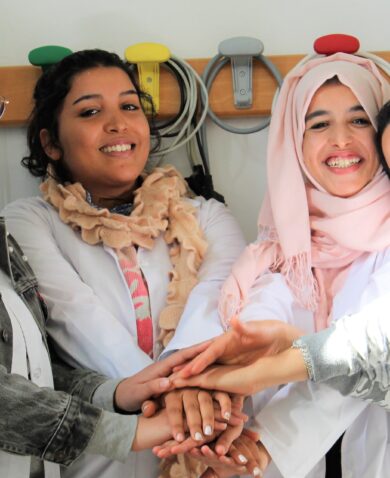According to Aguilar, better understanding these linkages can assist integration of critical gender and climate considerations into project design, while also increasing learning on these themes among decision and policymakers, program staff and practitioners—as well as funders—working in different sectors.
The development of a ccGAP involves a cross-sectoral process facilitated by IUCN and hosted by a country’s government ministry(s), through which a wide range of stakeholders, including women’s organizations, governments, civil society and researchers, come together to identify where and how gender and climate change issues can jointly be addressed.
First, IUCN reviews available data on local gender issues, climate risks and relevant sector specific information, for example on key sectors such as water, forests, health and transport. Next, it builds the capacity of national and subnational women’s organizations by increasing their technical knowledge on climate change so they can meaningfully participate in the ccGAP workshop.
The multi-stakeholder national ccGAP workshop brings together climate decision-makers with women and gender experts to determine gender gaps that undermine climate resilience. Gender-responsive actions to fill these gaps are identified and prioritized, and action plans per sector are created to complement a country’s existing national climate policy or plan. To date, the IUCN Global Gender Office has applied this methodology 23 times; three have been supported by USAID in Zambia, Peru and the Dominican Republic (forthcoming).
In Peru, for example, the development of a national ccGAP brought together more than 20 women’s organizations and 100 stakeholders working on climate change-related issues and programs from multiple ministries, agencies and networks. Together, they identified eight priority sectors as having the most potential for impact. Eighteen gender-related activities across four sectors are currently being implemented, and USAID/Peru has already used the ccGAP to frame gender equality mandates in the USAID-funded Green Infrastructure for Water Security program.
All activities within ccGAPs are designed to be inclusive, improve quality of life, increase sustainability and propel transformative change. ccGAP activities often take a fresh approach—moving away, for example, from only involving women at the household level and viewing women as victims of climate-related impacts and instead moving toward recognizing women as powerful agents of change who can influence climate activities at all levels, across sectors.
Examples of innovative programs developed under ccGAPs include:
- Female-run early warning systems in Liberia: To help rebuild the country’s meteorological system after several years of civil war, groups of women were trained and given cellphones to share local weather conditions and receive alerts in advance of storms and other extreme weather events. This program has been a win-win activity for both the government and the women involved by combining capacity building, data collection and an early warning system.
- Water taxi network in Egypt: Women in Egypt are exposed to high levels of pollution as they move around the city for their daily errands. To reduce exposure and overall emissions, the Ministry of Transport introduced a water taxi system on the Nile with stops at the locations most visited by women (markets, school, mosques etc.).
- Backpacks for life in Dominican Republic: When researchers analyzed why more women were dying in severe weather events than men, they discovered that women took longer to decide what essentials to pack before leaving the house. To remedy this, an initiative to have a backpack packed and ready to go in the event of an emergency was introduced.
According to Aguilar, being gender-responsive is more than just ensuring women’s participation; it involves identifying, reflecting and implementing interventions to address gender gaps and overcome gender biases in policies and interventions, and contributes to the advancement of gender equality. In turn, this is a fundamental part of equitably and effectively adapting to climate-related risks.
Blog posts on the Chemonics blog represent the views of the authors and do not necessarily represent the views of Chemonics.






















